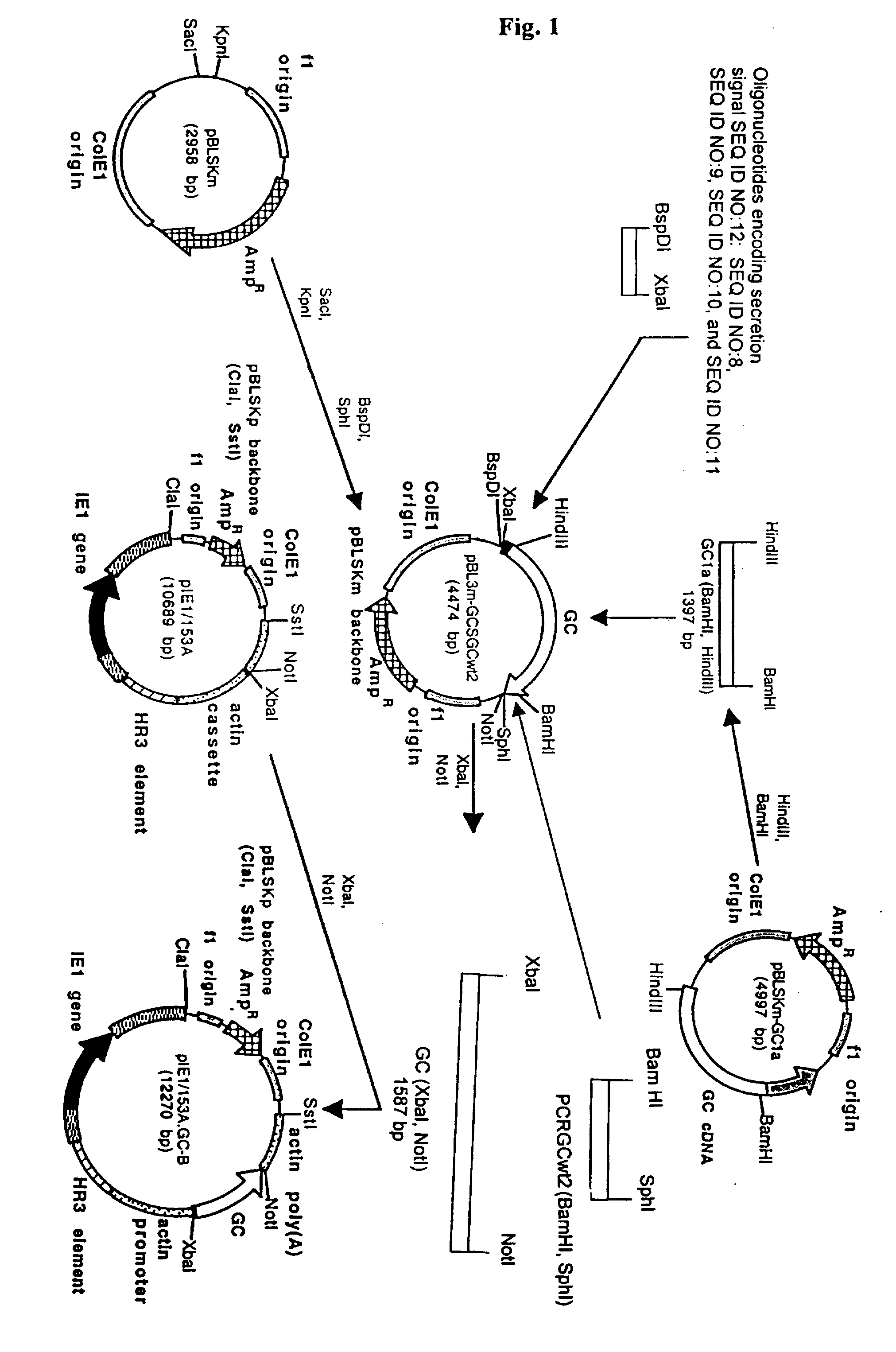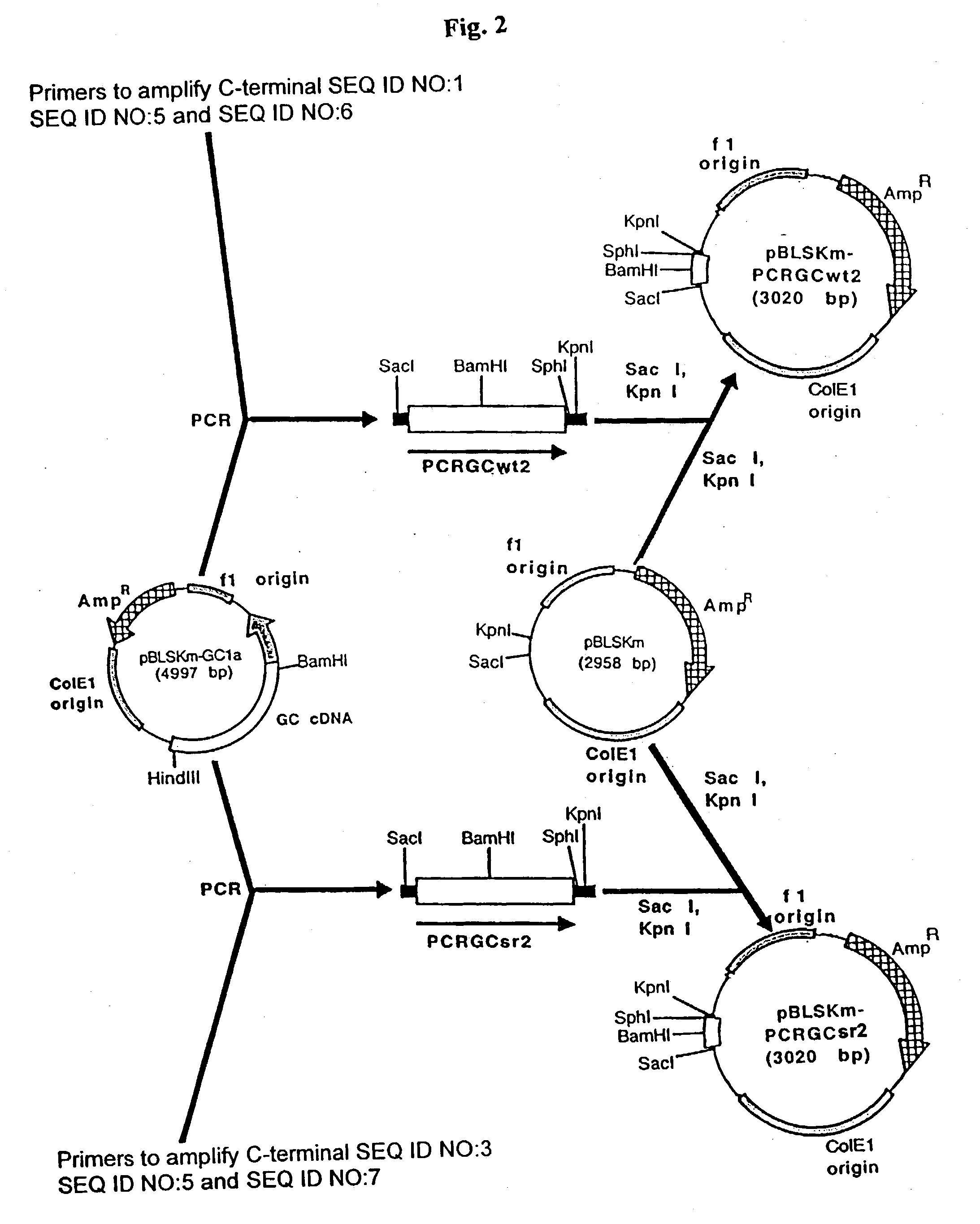Expression system for effeiciently producing clinically effective lysosomal enzymes (glucocerebrosidase)
a technology of lysosomal enzyme and expression system, which is applied in the direction of enzymology, viruses/bacteriophages, peptide/protein ingredients, etc., can solve the problems of insufficient catabolysis of glycolipids, inability to catabolyze glycolipids at a sufficient rate, and inability to achieve the effect of reducing the cost of enzyme replacement therapy
- Summary
- Abstract
- Description
- Claims
- Application Information
AI Technical Summary
Benefits of technology
Problems solved by technology
Method used
Image
Examples
example 2
GC Expression from Polyclonal Populations
[0099] To generate stably transformed insect cell lines, two antibiotic selection schemes were tested, both well established in the art:
[0100] 1) Co-transfection of the expression plasmids with pBmA.HmB (Dr. Iatrou, University of Calgary, Calgary, Alberta, Canada), a selection plasmid expressing hygromycin B phosphotransferase, enables cells with successful integration events to survive in the presence of the antibiotic hygromycin B. The procedure for selecting stable cell lines using hygromycin B is discussed in Farrell et. al., (1998).
[0101] 2) Co-transfection of the expression plasmids with pBmA.PAC (Dr. Iatrou, University of Calgary, Calgary, Alberta, Canada), a selection plasmid expressing puromycin acetyltransferase, enables cells with successful integration events to survive in the presence of the antibiotic puromycin.
[0102] Bm5, High Five.TM., and Sf21 cells were transfected in 6-well plates with a 100:1 molar ratio of expression cass...
example 3
GC Expression From Single Clones
[0105] Selection of clones
[0106] Co-transfection of plasmids encoding GC with plasmids encoding hygromycin B phosphotransferase or puromycin acetyltransferase created populations of GC expressing Sf21, High Five.TM., and Bm5 cells resistant to either puromycin and hygromycin. All populations were transfected in the presence of a 100:1 molar ratio of GC expression encoding plasmid to antibiotic resistance encoding plasmid. After culturing for two days in nonselective media, cells were selected for hygromycin or puromycin resistance.
[0107] Clones of Sf21, High Five.TM., and Bm5 cells expressing GC were isolated by two rounds of limited dilution cloning. In this method, cells from all populations were diluted in selective media and plated at a density of one cell / well in 96-well plates. Cells from single colony wells were reseeded and allowed to grow in selective media for 10 days, after which relative GC activity in the supernatant was determined from t...
PUM
| Property | Measurement | Unit |
|---|---|---|
| Digital information | aaaaa | aaaaa |
| Electrical resistance | aaaaa | aaaaa |
Abstract
Description
Claims
Application Information
 Login to View More
Login to View More - R&D
- Intellectual Property
- Life Sciences
- Materials
- Tech Scout
- Unparalleled Data Quality
- Higher Quality Content
- 60% Fewer Hallucinations
Browse by: Latest US Patents, China's latest patents, Technical Efficacy Thesaurus, Application Domain, Technology Topic, Popular Technical Reports.
© 2025 PatSnap. All rights reserved.Legal|Privacy policy|Modern Slavery Act Transparency Statement|Sitemap|About US| Contact US: help@patsnap.com



